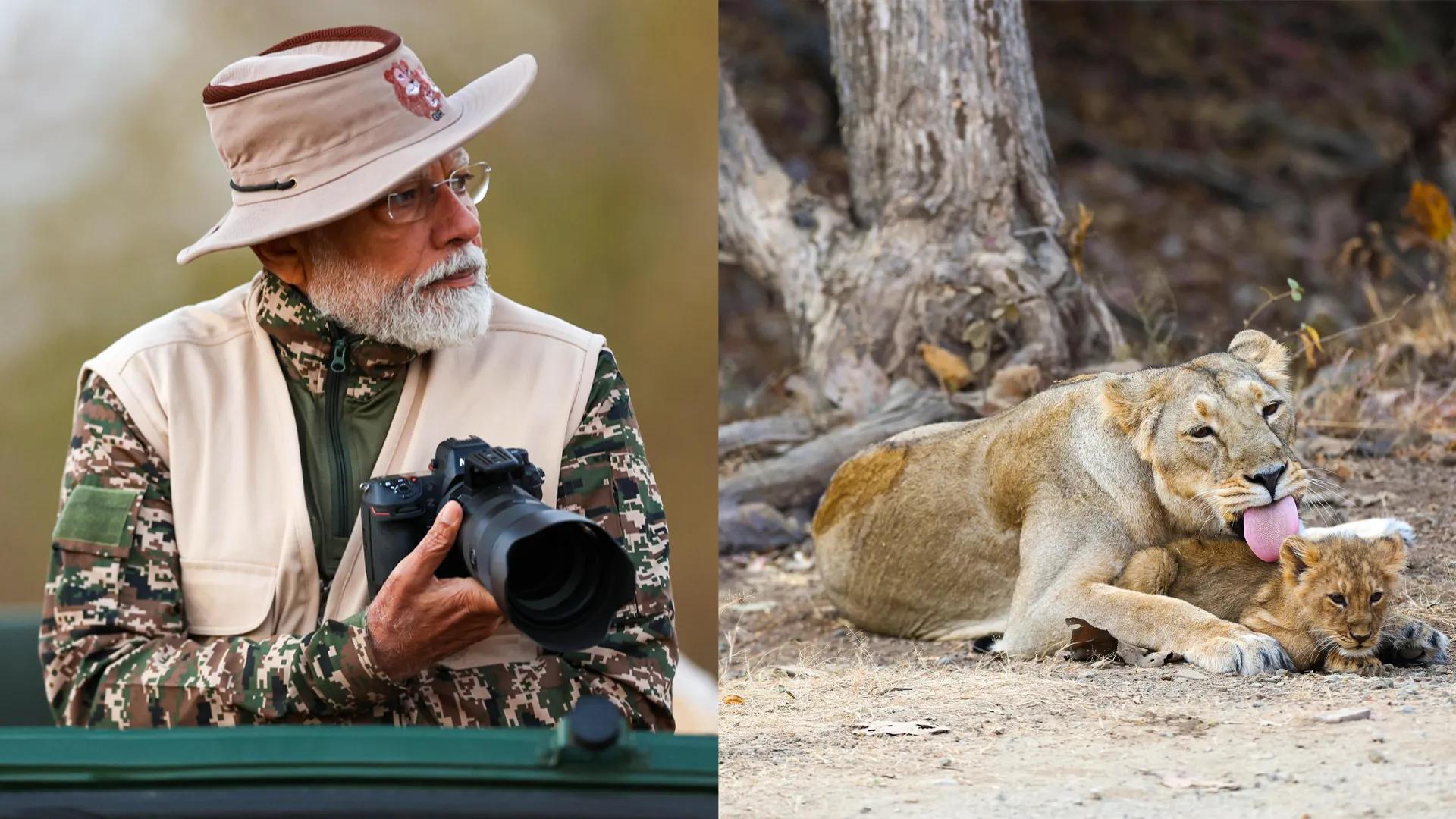Prime Minister Narendra Modi celebrated World Wildlife Day with a special trip to Gir National Park in Gujarat, where he went on a lion safari. Wearing a safari dress and carrying a camera, PM Modi saw the regal Asiatic lions that roam the area.
Expanding on his greetings on the occasion, the Prime Minister stated, “Today, on #WorldWildlifeDay, let’s reiterate our commitment to protect and preserve the incredible biodiversity of our planet. Every species plays a vital role—let’s safeguard their future for generations to come! We also take pride in India’s contributions towards preserving and protecting wildlife.”
Today, on #WorldWildlifeDay, let’s reiterate our commitment to protect and preserve the incredible biodiversity of our planet. Every species plays a vital role—let’s safeguard their future for generations to come!
We also take pride in India’s contributions towards preserving… pic.twitter.com/qtZdJlXskA
— Narendra Modi (@narendramodi) March 3, 2025
Gujarat’s Conservation Efforts for Asiatic Lions
Asiatic lions now occupy close to 30,000 square kilometers in 53 talukas of 9 districts in Gujarat. A number of initiatives have been adopted by the state government to ensure the safety of these lions as well as other wildlife species. One of these is the formation of a National Referral Center for Wildlife at Junagadh district, spread over 20.24 hectares at New Pipalya.
To enhance conservation efforts, the Gujarat government has also set up a high-tech wildlife monitoring center and a state-of-the-art hospital in Sasan. In 2024, 237 beat guards, including 162 men and 75 women, were recruited to patrol protected areas and safeguard lion habitats.
PM Modi’s Role in Gir’s Conservation
As the then Chief Minister of Gujarat, Narendra Modi was instrumental in the conservation of Asiatic lions. In 2007, he visited Gir forest to evaluate conservation requirements and subsequently launched major initiatives to enhance wildlife conservation. His initiative resulted in the idea of Bruhad Gir, where the conservation efforts were extended beyond Gir National Park to a 30,000 sq. km region from Barda to Botad.
In the initiative, Greater Gir’s development also focused on the well-being and advancement of local communities in a manner that ensured sustainable conservation. These initiatives further solidify India’s position as a front-runner in wildlife conservation and biodiversity preservation.






















